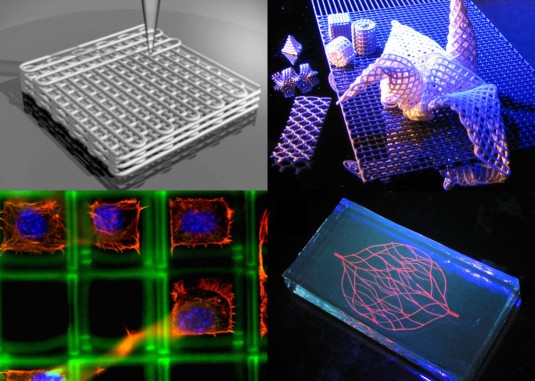A new appointment at Harvard will explore the chemistry and physics of gels, polymers, and colloidal suspensions for 3D printing.
A leading researcher on 3D printing has accepted an appointment at Harvard University to run a new lab and design studio exploring how to bring a more diverse set of materials into additive fabrication. Jennifer A. Lewis will work on the integration of multiple platforms for materials synthesis, assembly and characterization. The goal is to design novel inks and high-precision 3D printing methods using gels, polymers, and colloidal suspensions.

“Our approach is distinct from commercially available 3D printers because of its materials flexibility, precision, and high throughput,” Lewis says. Her research takes 3D printing beyond its current commercial applications in manufacturing and health care, expanding 3D printing to a more sophisticated level. By designing inks from diverse classes of materials, her research group is able to create very finely tailored structures with precise electronic, optical, mechanical, and chemical properties.
In announcing the appointment, Harvard says Lewis’ “deep understanding of the chemistry and physics of soft materials” enables her to design and manipulate substances and suspensions to create architectures that mimic those found in nature—such as bone, spider webs, or vascular networks. Her unique prototyping platform is already able to pattern a broad array of functional materials under ambient conditions with features as tiny as one micron (less than one 25,000th of an inch) over areas as large as the top of a square coffee table, all in a matter of minutes. Once deposited, the inks solidify very rapidly, enabling the creation of intricate spanning and self-supporting structures, even at a microscopic scale.
Lewis says the potential uses for this technique in the near term are broad and include printed electronics, 3D polymer scaffolds for tissue engineering, and advanced materials for energy harvesting and storage.
Prior to her dual appointment as both the Hansjörg Wyss Professor of Biologically Inspired Engineering at the Harvard School of Engineering and Applied Sciences and a Core Faculty Member at the Wyss Institute for Biologically Inspired Engineering at Harvard University, Lewis was a professor of Materials Science and Engineering and Director of the Materials Research Laboratory at the University of Illinois at Urbana-Champaign (UIUC), where she started her career in 1990.





